
Winkelman Architecture has designed this spectacular lakeside refuge, featuring cantilever decks and an abundance of glass, located in the charming town of Standish, Maine. When the owner’s house had burned down, he wanted to get started quickly on design work for a new home in the footprint of the old cottage, using the opportunity created by this loss to create something that better suited the sloping site and his lifestyle there.
The initial vision for the project was a small, low-maintenance structure that would blend seamlessly into the natural landscape. Since the old cottage and the building site were close to the water, amongst stands of tall mature trees, integrating into the site and making the most of the views was of critical importance. This proximity to the water also meant that the size of the new structure would be significantly constrained by zoning regulations.
DESIGN DETAILS: ARCHITECT Winkelman Architecture BUILDER Tom West STRUCTURAL ENGINEER Albert Putnam Associates CIVIL ENGINEER Albert Frick Associates LANDSCAPE DESIGN Gnome Landscapes LIGHTING DESIGN Tim Staples, TRS Lighting STAIR FABRICATION Nick Fournier BUILD AND FRAMING Jim Macomber
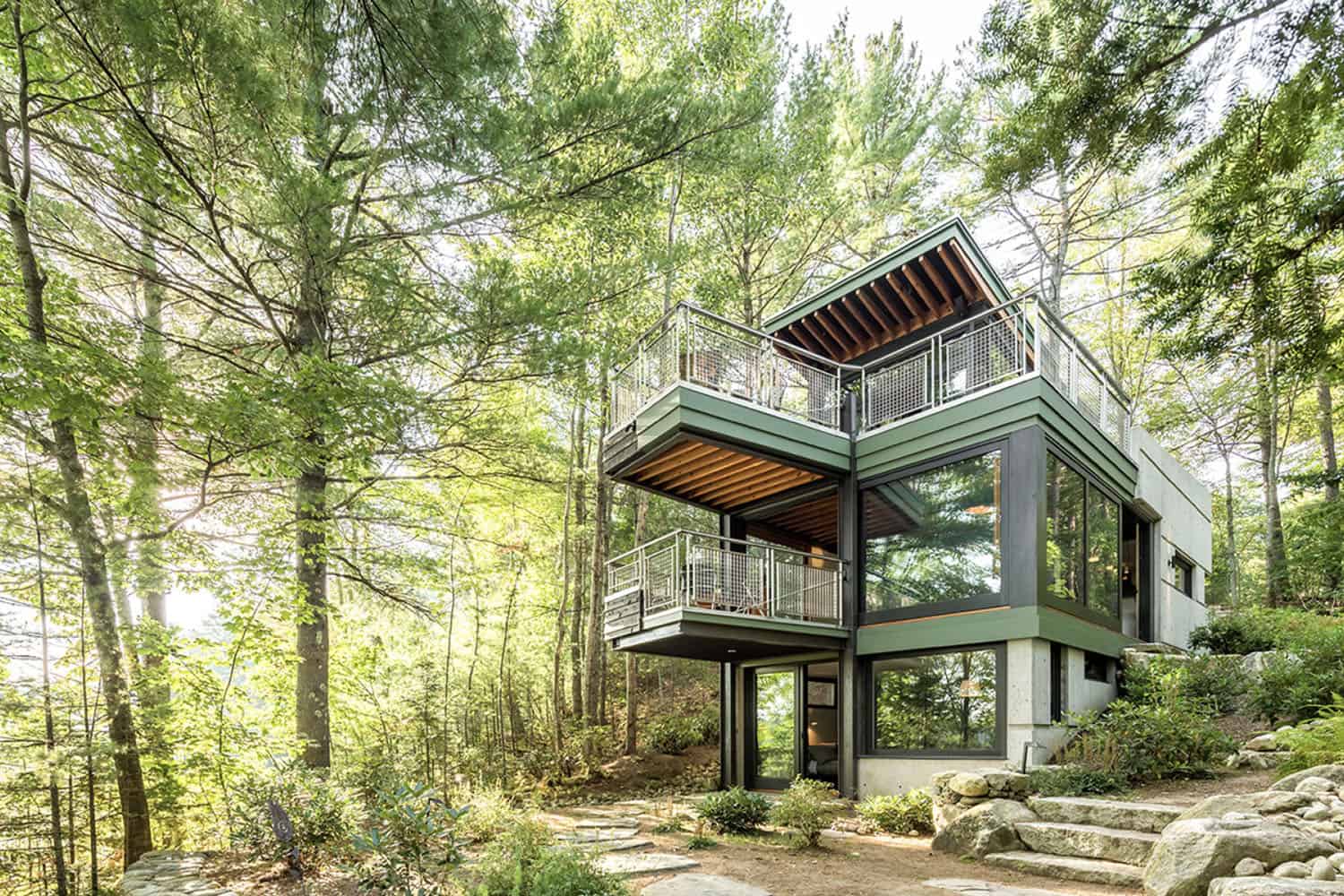
After spending some time on his site, the architects suggested that the uphill portion of the house should be a sculpted concrete base, anchored to the back of the hillside, and growing out of the ground to be visible from the exterior.

This would be durable and maintenance-free, and also seemed appropriate given the history of the fire with the old cottage.

More importantly, it would fit the vision of something emerging from the site’s topography while simultaneously being softened and reclaimed by the surrounding vegetation over time. To the water side of this base would be large glass panels set inside a frame of steel and reclaimed timbers, looking out to the views of the treetops and the lake.
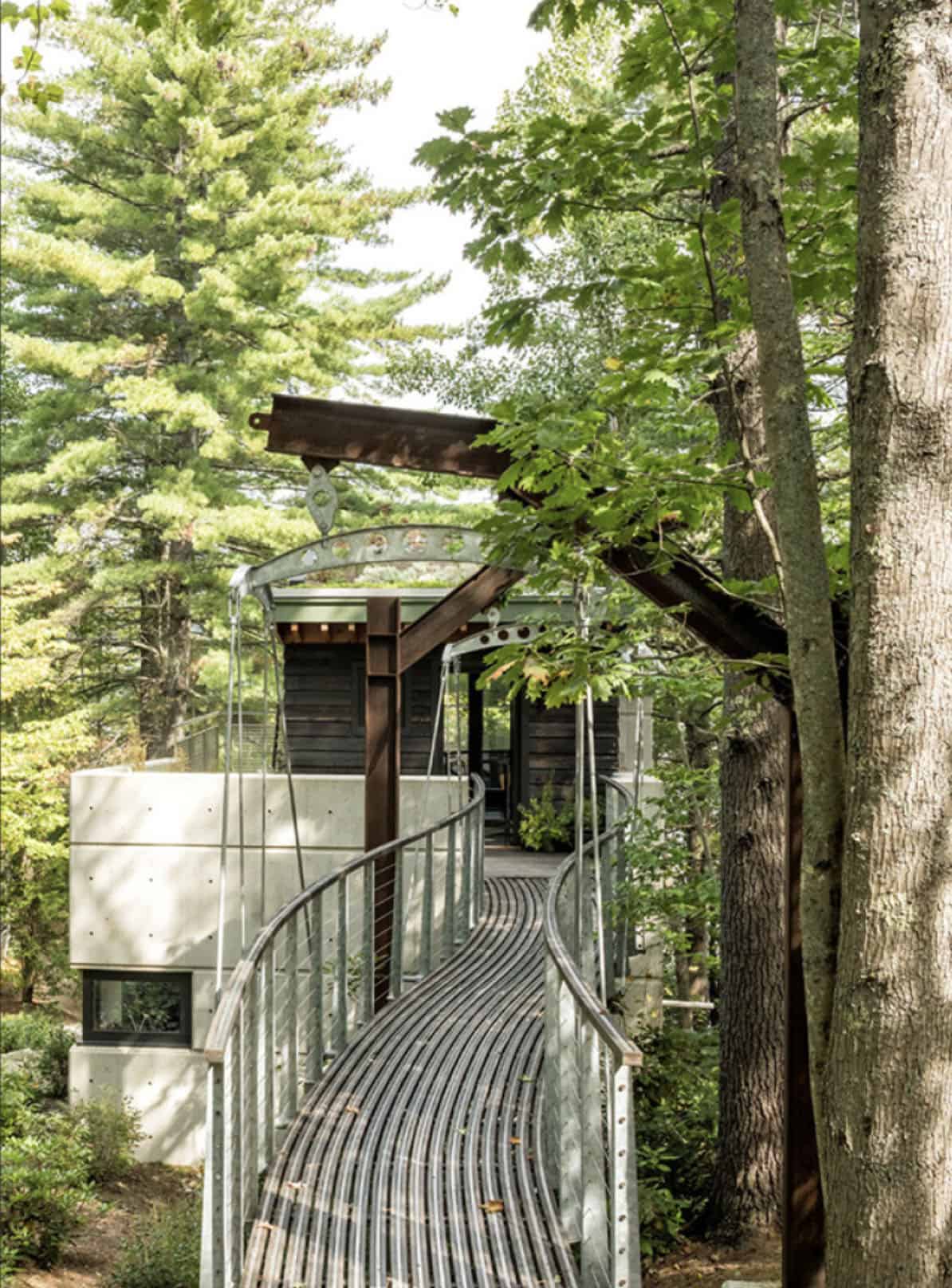
Since the owner lives alone but entertains often, it made sense that the arrival at the house would be on the upper level, tethered to the back of the hillside, where guests would leave their cars. So, a three-story design emerged, with an entry/mudroom and wet bar at the top, accessible from the parking area via a sculpted footbridge.
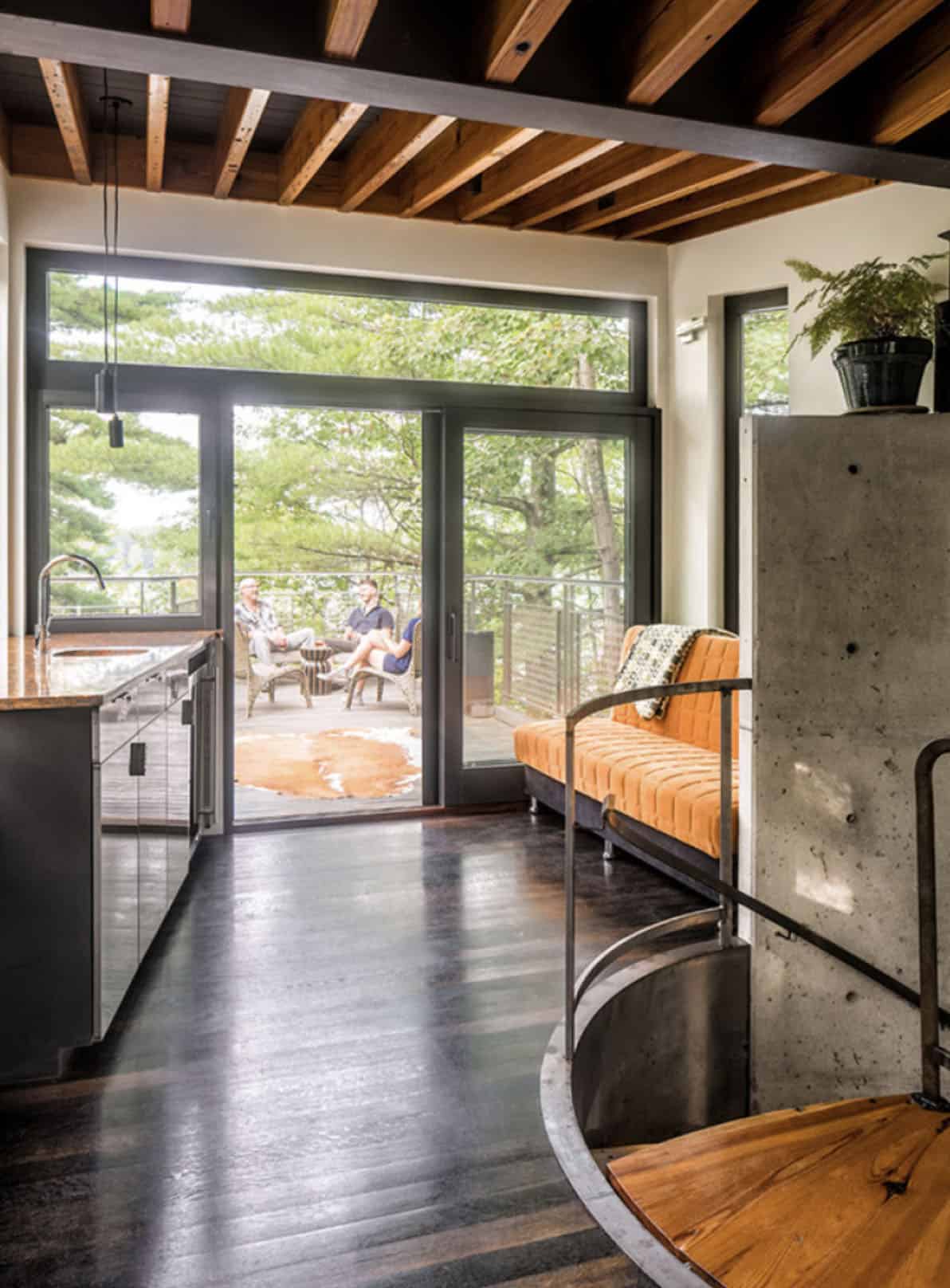
Beyond this entry room was an open deck and rooftop garden, cantilevered out into the treetops. Guests could arrive, set their things down, and make their way straight out to the deck.
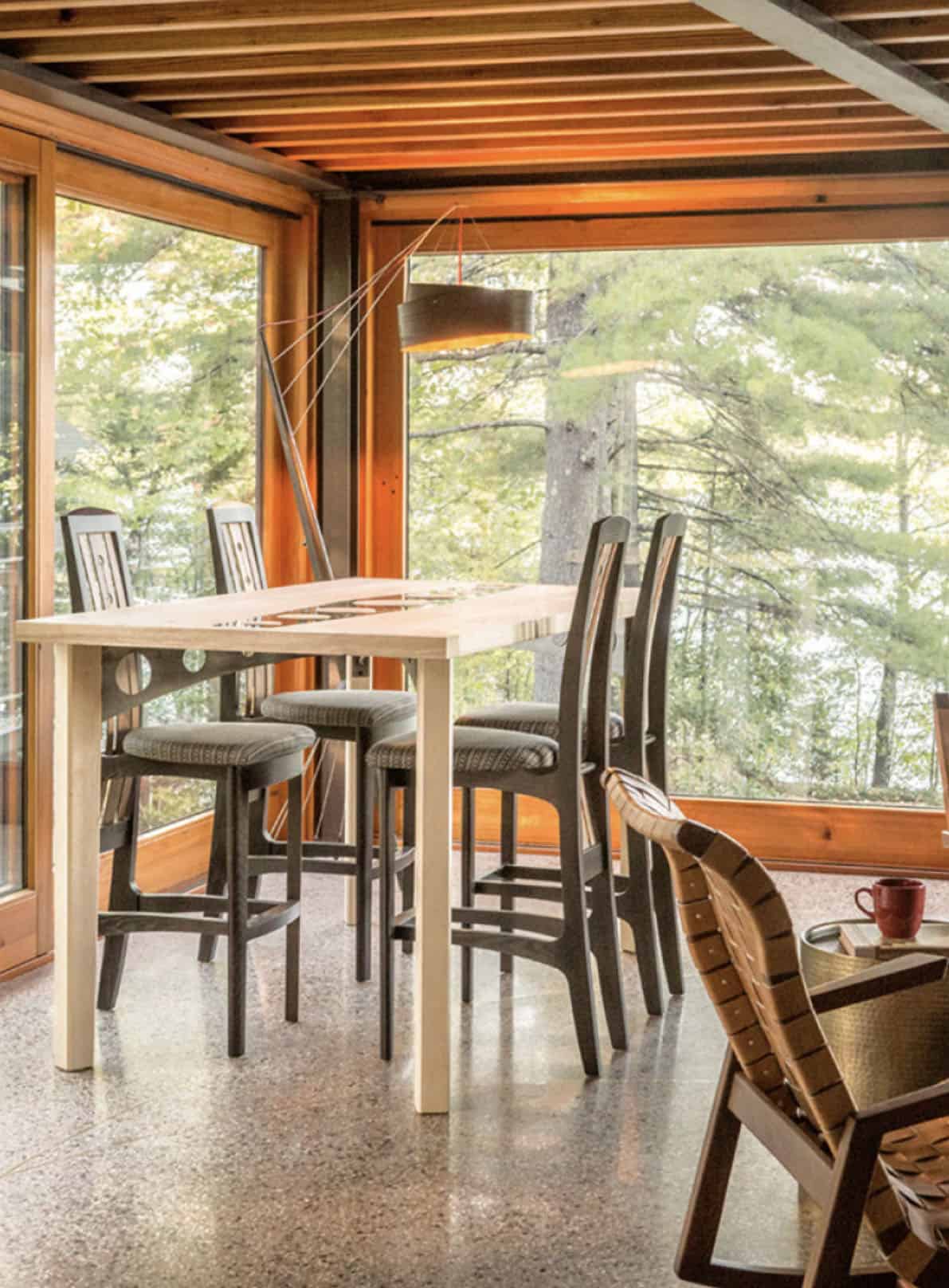
Above: In the dining room, the furniture was custom-designed by the homeowner and builder, Tom West.
Below this would be the kitchen and main living area with another cantilevered deck, and under that, burrowed into the hillside, was the owner’s bedroom suite.

All three levels are connected by the central jewel of the house, a continuous helical staircase, an element that the owner modeled and fabricated from reclaimed heart pine timbers using a combination of CNC machines and hand tools. The living room features a wood-burning hearth.
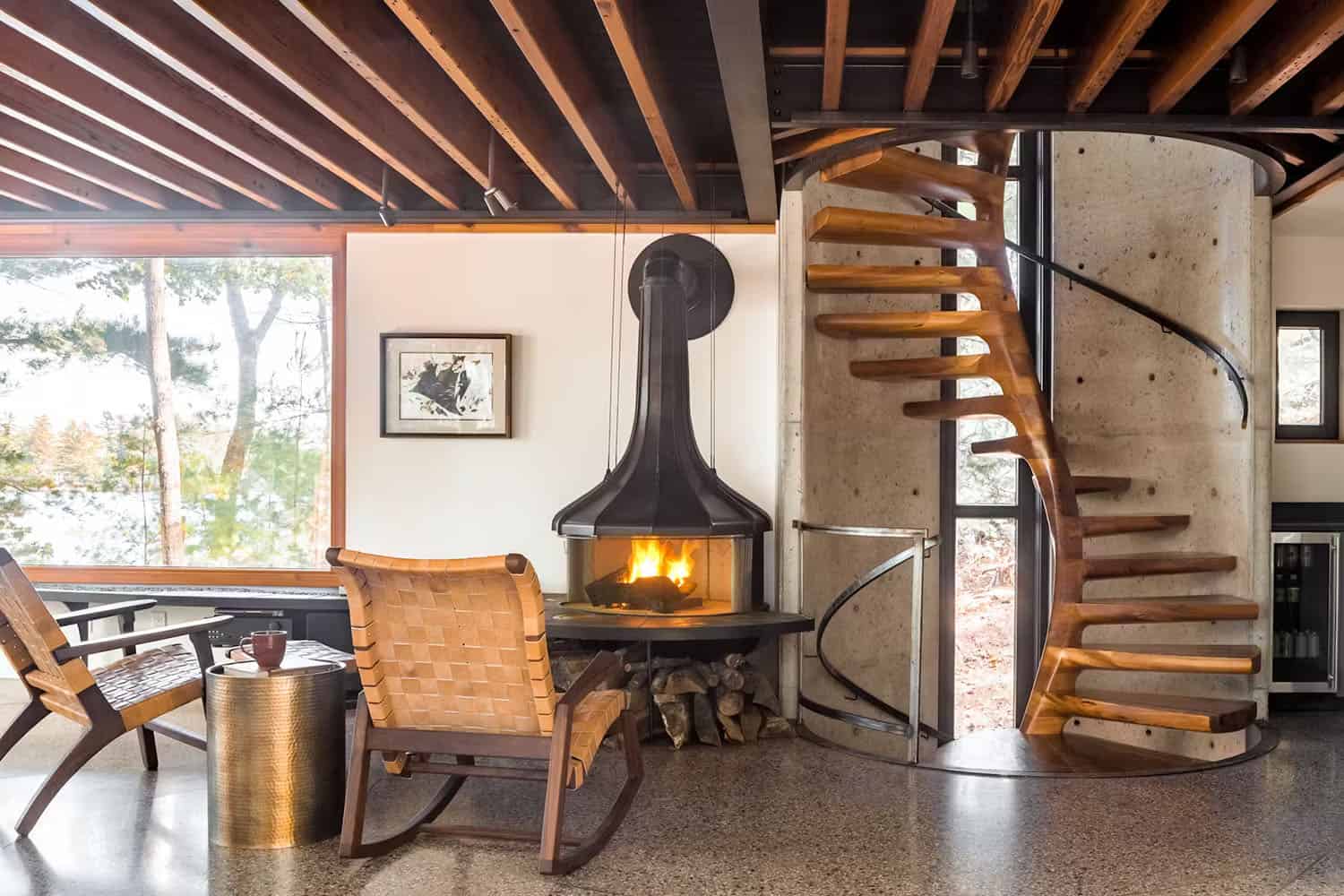
What We Love: The design of this lakeside refuge in Maine is absolutely stunning. We are loving so many details in this home, from the spiral staircase and suspension bridge to the green roof, concrete foundation, and large glass windows soaking in the views. Every element is thoughtfully crafted to connect the home with its breathtaking natural surroundings. The cantilevered decks are also a fantastic feature, perfect for lounging and entertaining.
Tell Us: What details in the design of this home do you find most inspiring? Let us know in the Comments below!
Note: Be sure to check out a couple of other fabulous home tours that we have highlighted here on One Kindesign in the state of Maine: This rustic mountain home provides a peaceful escape in the woods of Maine and Cozy cabin with summer camp vibes on the tranquil coastline of Maine.
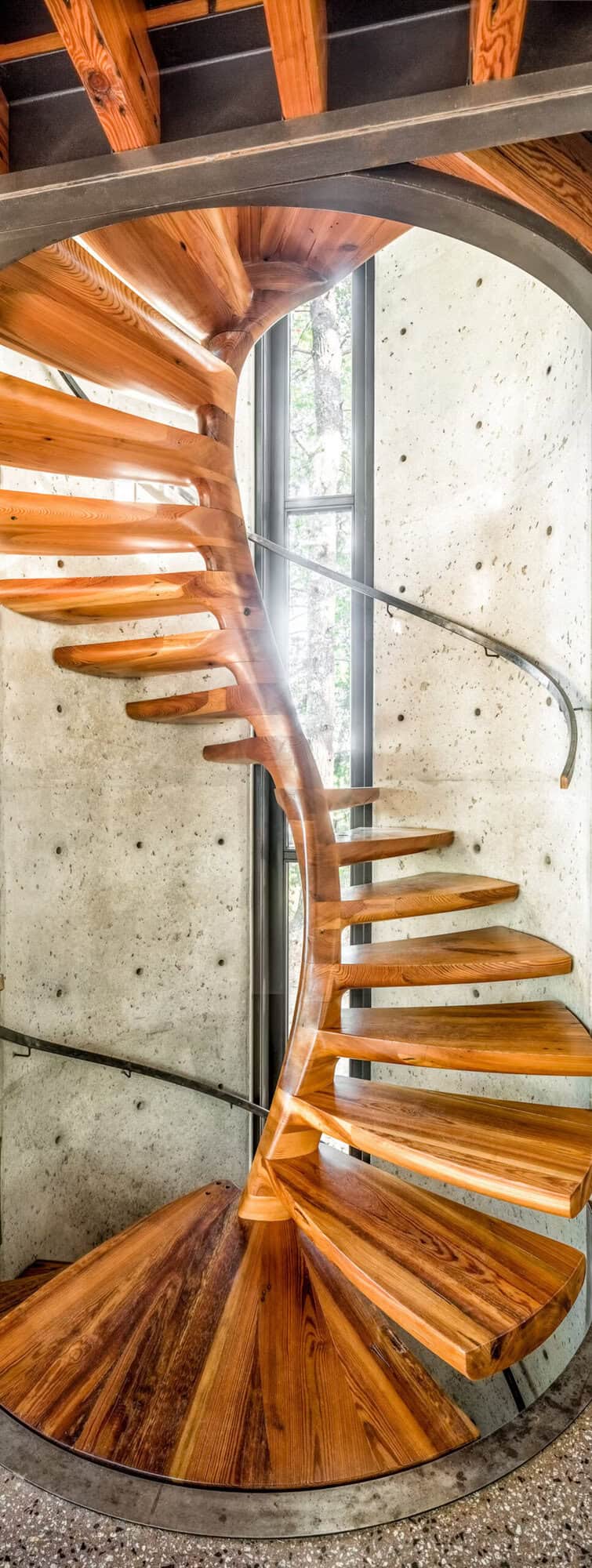
Above: The spiral staircase is a work of art. Each piece is bolted to the one before. It is pinned to the wall to maintain the structural capability.
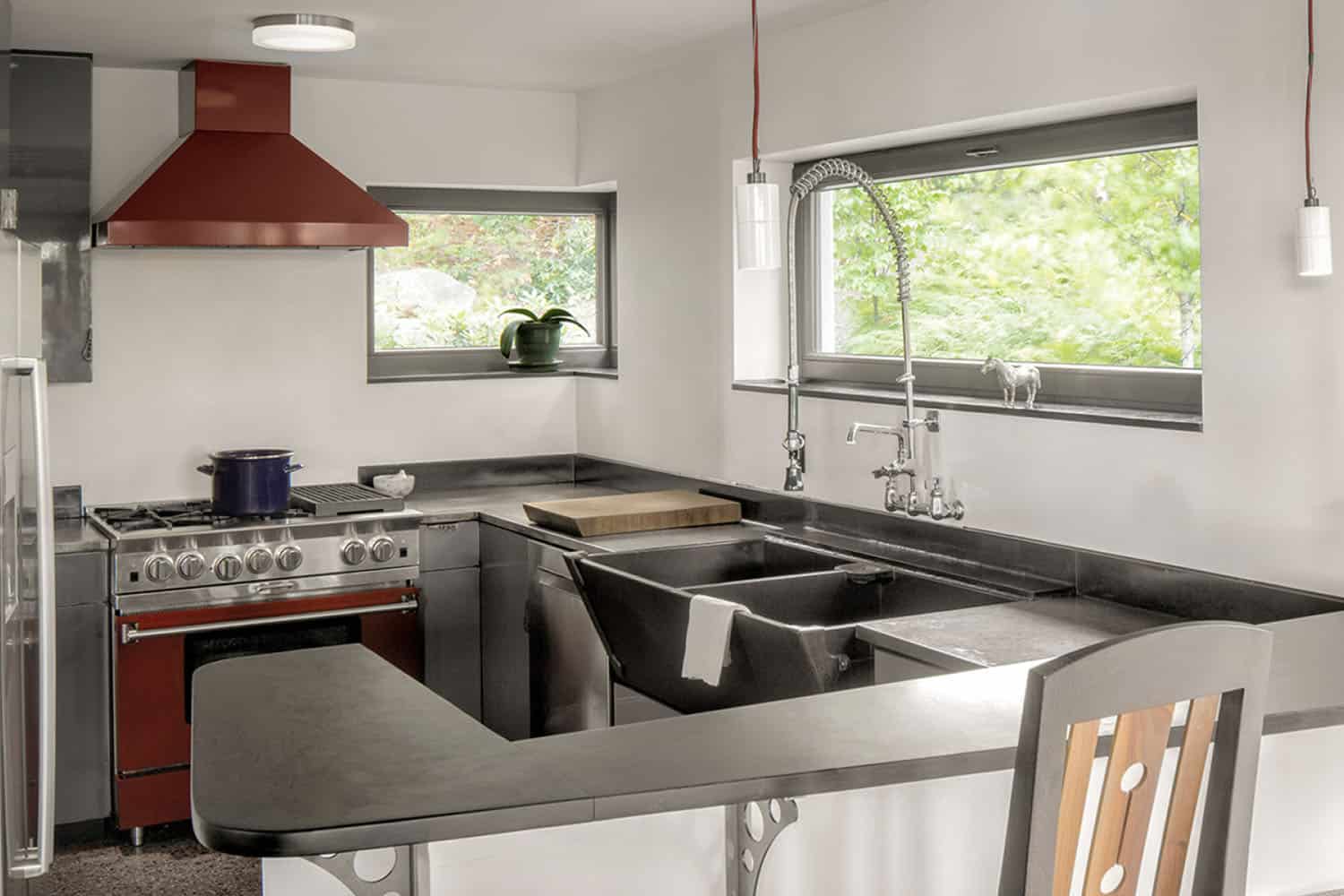

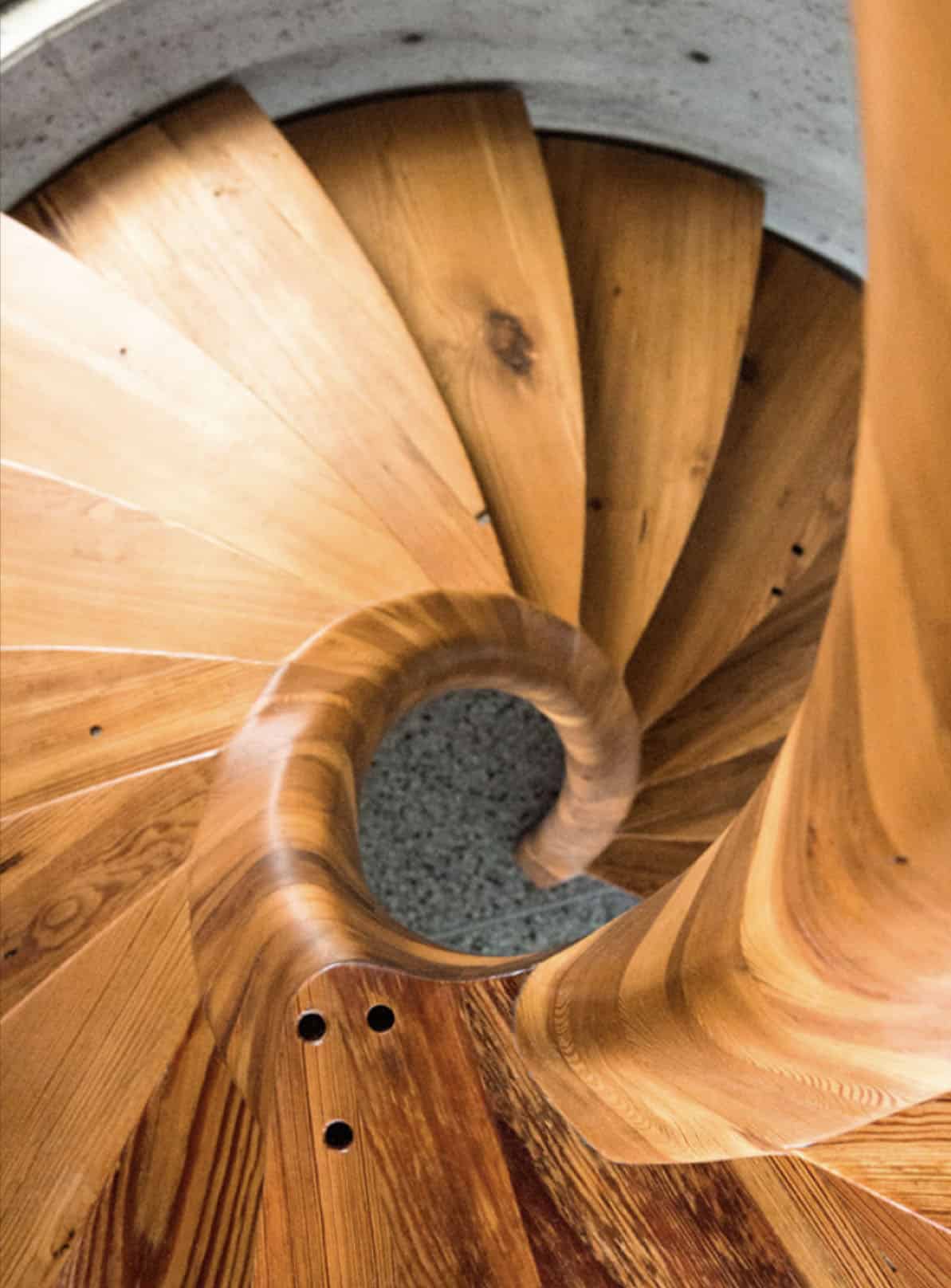






Above: From this southern view of the home, you can see the exposed concrete foundation and a suspension bridge that enters the main living area, maximizing views of the water. The owner’s bedroom is on the basement level.


Above: This home features green roofs that help connect this spectacular lakeside refuge in Maine to the surroundings. According to the EPA, “green roofs can significantly reduce the amount of rain water that would otherwise run off an impervious roof surface. Green roofs can also help reduce building energy usage and noise levels while increasing the durability and lifespan of the roof compared to conventional roofs.”
PHOTOGRAPHER Jeff Roberts


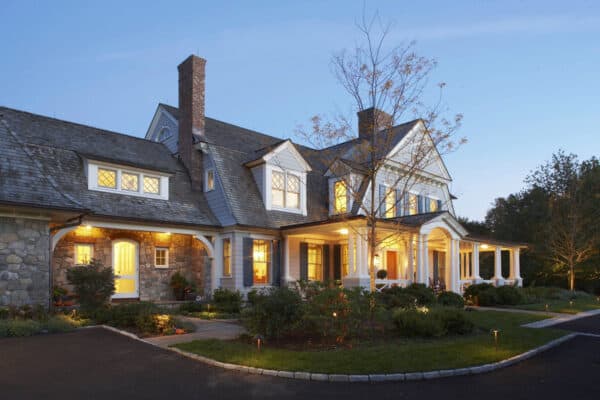
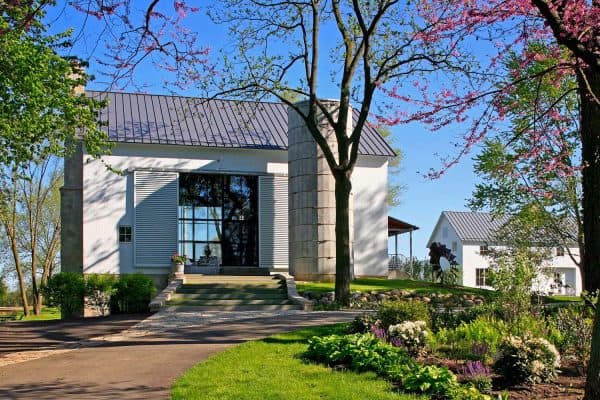
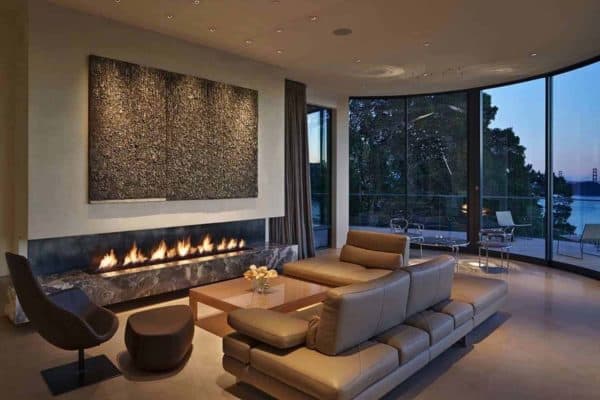
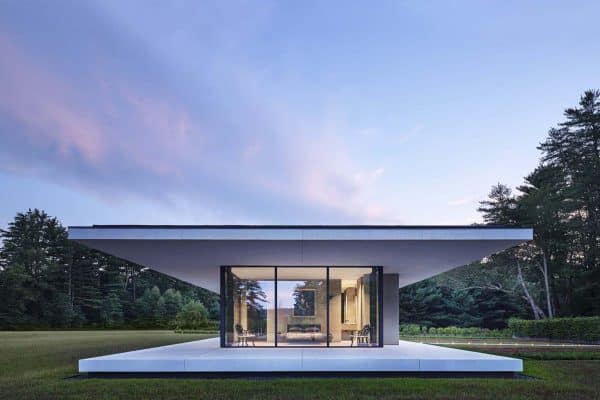


2 comments